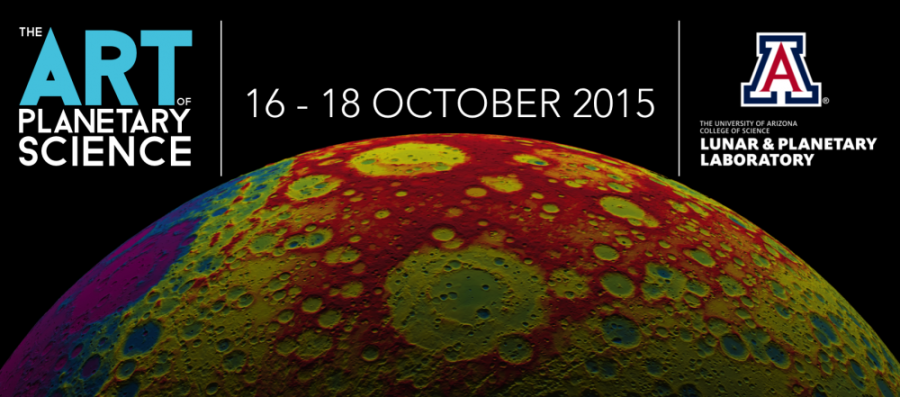The UA Lunar and Planetary Laboratory will celebrate the union of art and science during the “Art of Planetary Science” exhibition, held Friday, Oct. 16, through Sunday, Oct. 18, in the atrium of the Kuiper Space Sciences building.
“I think that the art community here is really big, and the science community here is really big,” said Jamie Molaro, the exhibition’s organizer and a Ph.D. candidate in planetary science. “Both of those communities locally are really part of what Tucson is known for.”
This event, the brainchild of planetary scientists and researchers from related fields, according to Molaro, was the product of one simple question to the public: What do you think about what we do, and how does it inspire you?
“What we found is there were already lots of artists here who were [mixing art and science], they just didn’t have a venue for it,” Molaro said.
The “Art of Planetary Science” exhibition allows scientists to share the beauty of their work with people outside of their field. It allows artists to synthesize their own meaning from the realm of science.
“Science is all around us,” wrote Sarah Ukiah Hoy, a senior studying art and visual culture education, in an email. “An event of this nature allows the community to share processes, stories, and points of view. It makes the world of science welcoming to those who may find it intimidating, and it allows artists to share their appreciation for planetary science [and] scientists.”
This is the third year the UA will host the event, which is expected to be the largest so far. About 250 pieces of art will be on display this weekend from about 120 artists and scientists, according to Molaro.
Hoy is part of a class called Community, Culture and Art Education that gets art students involved in the community. The class will contribute three interactive pieces of art and activities—called artistic interventions.
Various artistic mediums are expected at this exhibition. Michael Heiland, a sophomore studying film and television who does time- lapse photography and video, will display long-exposure digital photography of the night sky at the event.
Lexi Coburn, a local Tucson artist who has participated in both of the previous shows, makes abstract prints involving the use of organic and earthy textures inspired by planetary science.
“My artwork tries to exemplify the beauty that exists in many of the Earth’s processes,” Coburn said.
She said she finds the show valuable because “it provides people with some of the latest research that is being conducted and allows them to see visual representations of that data.”
Scientists like Molaro believe that events like the “Art of Planetary Science” exhibition make science more approachable to the general public.
“I think that people like science, they just often times feel like it’s inaccessible,” Molaro said. She said the point of the exhibition is to allow people to see science in a way “where you could just focus on the simple beauty of it.”
Follow Mikayla Mace on Twitter.









